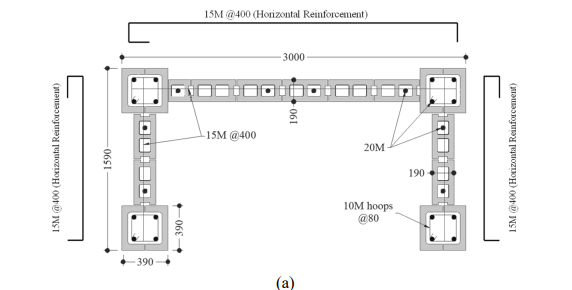Amgad Mahrous, Belal AbdelRahman, and Khaled Galal
i PhD Graduate, Concordia University, Montreal, Canada, amgad.mahrous@mail.concordia.ca
ii Postdoctoral Fellow, Concordia University, Montreal, Canada, belal.abdelrahman@concordia.ca
iii Professor, Concordia University, Montreal, Canada, khaled.galal@concordia.ca
ABSTRACT
Designing seismic-resistant mid- to high-rise reinforced masonry (RM) buildings requires an effective seismic force-resisting system (SFRS) that provides sufficient lateral strength and deformation capacity. Core walls are often chosen as the SFRS for reinforced concrete (RC) structures because they efficiently incorporate elevators, staircases, and utility shafts within the building core, maximizing floor space. These walls also offer flexibility in architectural layouts while maintaining structural integrity and seismic performance. Although much research has focused on RC core walls, little is known about the behavior of reinforced masonry core walls. This study experimentally evaluated the structural performance of a reinforced masonry core wall with boundary elements (RMCW+BEs) under lateral cyclic loading. The C-shaped RMCW+BEs was tested as a potential alternative to rectangular RM shear walls, offering improved structural and architectural benefits for typical RM buildings. The wall, representing the first story of a core wall in a 12-story building, demonstrated high ductility (14∆y) without losing lateral strength. The core wall exhibited a flexural-dominant ductile response, with a well-distributed crack pattern and significant energy dissipation. The findings suggest that RMCW+BEs could serve as an effective SFRS in RM buildings, contributing to the advancement of seismic-resistant construction and improving the resilience of RM buildings in North American seismic zones.
KEYWORDS: Core walls, Reinforced Masonry, Cyclic response, Quasi static, Lateral capacity, Ductility, Boundary Elements.
098-Mahrous.pdf



